The Ultimate Yixing Teapot and Tea Pairing Guide: Master the Art of Perfect Tea Brewing in 2025
Ultimate Yixing Teapot Tea Pairing Guide 2025 | Expert Tips Meta Description: Master Yixing teapot and tea pairing with our complete guide. Learn clay types, sizing, specific pairings, and expert tips for perfect brewing every time.
TEAPOTARTISAN
10/3/202517 min read

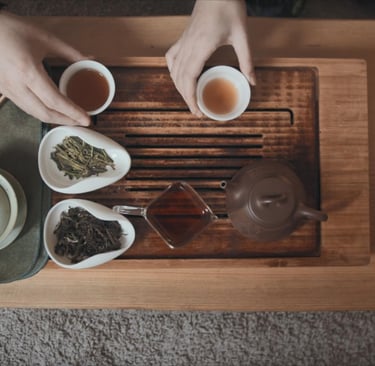
The Ultimate Yixing Teapot and Tea Pairing Guide
TEAPOTARTISAN
For over a millennium, the clay teapots of Yixing have been treasured by tea connoisseurs as the pinnacle of brewing vessels, transforming simple tea leaves into liquid poetry through their unique mineral composition and porous clay structure. Yet despite their legendary status, many tea enthusiasts struggle with the fundamental question: which Yixing teapot pairing works best for their favorite teas?
The confusion is understandable. With four main clay types, countless sizes, and hundreds of tea varieties, the combinations seem endless. Many tea lovers end up with beautiful teapots that don't enhance their brewing experience—or worse, they avoid Yixing teapots altogether, missing out on centuries of refined tea culture.
This comprehensive tea brewing guide cuts through the complexity with specific, actionable guidance that goes beyond basic clay type explanations. Whether you're selecting your first Chinese teapot or expanding an existing collection, this guide covers everything from clay characteristics and optimal pairings to sizing considerations, care instructions, and purchasing advice for authentic pieces.
Key Takeaways
Purchasing Guide and Quality Indicators: Investing Wisely in Authentic Yixing
Understanding how to identify and purchase authentic Yixing teapots is crucial for achieving the pairing benefits described in this guide. The market is flooded with imitations that lack the mineral properties necessary for proper tea enhancement.
Budget Considerations for Every Tea Enthusiast
Entry-Level ($50-150): Perfect for beginners who want to experience authentic Yixing clay without major investment. Look for simple, functional designs from reputable sellers. These teapots will provide genuine enhancement benefits while you develop your palate and preferences.
Mid-Range ($150-500): Ideal for serious enthusiasts ready to invest in higher-quality clay and craftsmanship. This range offers excellent clay quality, better artisan work, and often includes pieces from recognized makers. Most tea lovers find this range provides the best value-to-performance ratio.
High-End ($500+): Reserved for collectors and connoisseurs who appreciate finest craftsmanship, rare clay sources, or pieces from famous artisans. These teapots often become family heirlooms and may appreciate in value over time.
Quality Indicators: What to Look For
Authentic Clay Sources: Genuine Yixing clay comes exclusively from the Yixing region in Jiangsu province, China. The clay should feel substantial but not overly heavy, with a natural, unglazed finish that shows subtle texture variations.
Artisan Signatures and Certificates: Legitimate pieces include the maker's seal or signature, often accompanied by certificates of authenticity. Be wary of pieces claiming famous maker attribution without proper documentation.
Sound Test: When tapped gently with a fingernail, authentic Yixing teapots produce a clear, resonant ring. Fake or low-quality clay typically sounds dull or muffled.
Fit and Finish Quality:
Lid should fit snugly without wobbling
Spout should pour cleanly without dripping
Handle should feel balanced and comfortable
All joints should be smooth and well-integrated
Seller Reputation: Purchase from established tea retailers, specialized teaware shops, or dealers with verifiable track records. Read reviews and ask about return policies.
Where to Buy: Navigating the Market
Reputable Online Tea Retailers: Many established tea companies offer curated Yixing selections with authenticity guarantees. These sources often provide detailed clay information and brewing guidance.
Specialized Teaware Shops: Physical or online stores focusing specifically on Chinese teaware typically offer higher expertise and better authentication processes.
Direct from Yixing Region: Advanced buyers may purchase directly from artisans or their representatives, but this requires significant knowledge to avoid counterfeits.
What to Avoid:
Suspiciously low prices (authentic Yixing is never cheap)
Mass-produced pieces claiming handmade status
Sellers who cannot provide clay source information
Teapots with perfect, machine-like uniformity
Care and Maintenance Guide: Preserving Your Investment
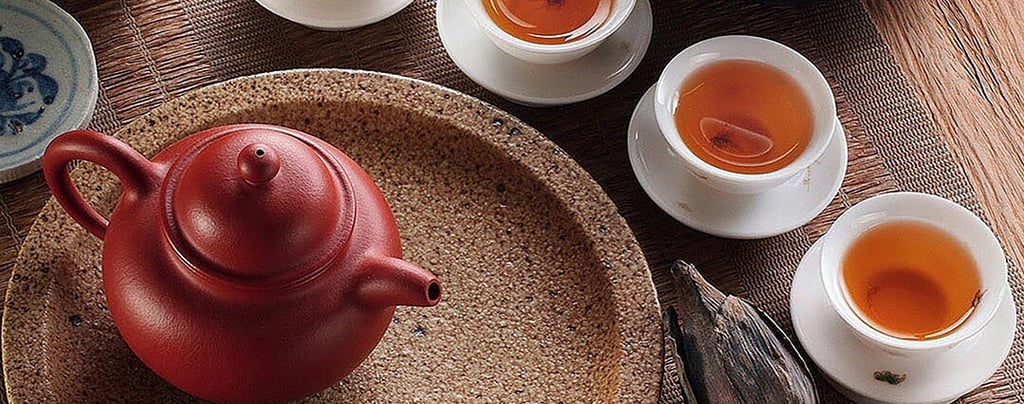

• Clay type determines flavor enhancement: Zhuni brightens delicate teas, Hongni mellows strong flavors, Zini preserves natural character, and Duanni reduces bitterness
• Size matters for brewing quality: Small teapots (80-150ml) excel for premium teas and solo sessions, while larger vessels work better for groups and delicate teas
• Proper pairing amplifies tea quality: Matching the right clay to your tea type can transform ordinary brewing into an extraordinary experience
• Authentication is crucial: Genuine Yixing clay from the Jiangsu province offers unique mineral properties that imitations cannot replicate
• Proper care extends teapot life: Never use soap, dedicate each teapot to one tea type, and allow proper seasoning time for optimal flavor development
Understanding Yixing Clay Types: The Foundation of Perfect Pairing
The secret to successful Yixing teapot pairing lies in understanding how different clay types interact with tea. Each clay variety from the Yixing region possesses unique mineral compositions and firing characteristics that affect porosity, heat retention, and flavor enhancement. Let's explore the four primary clay types and their optimal applications.
Zhuni (Vermillion Clay朱泥): The Delicate Enhancer
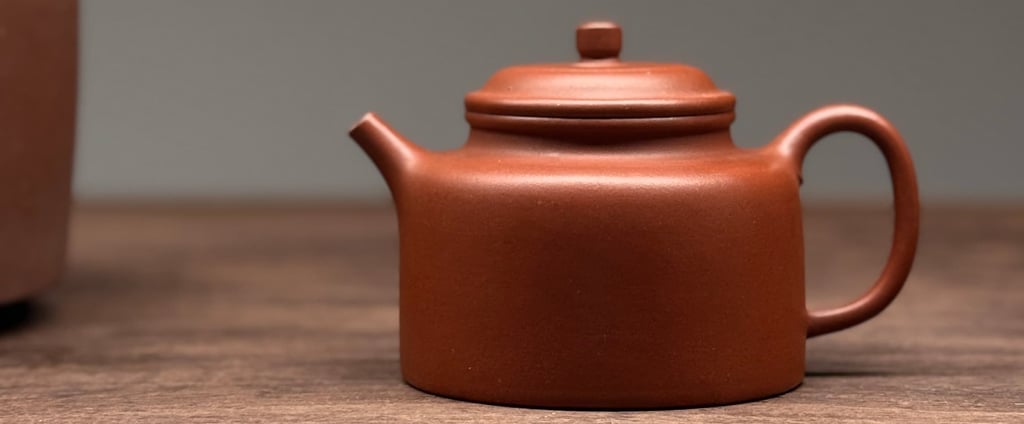

Characteristics: Zhuni represents the aristocrat of Yixing clays, fired at extremely high temperatures (1200°C+) to create an almost glass-like density. Its bright reddish-orange color and smooth texture make it instantly recognizable, while its low porosity and excellent heat retention create ideal conditions for delicate teas.
Best Tea Pairings: High-grade oolong teas, aged white teas, and lightly roasted teas benefit most from zhuni teapots. The clay's dense structure preserves subtle flavors while its mineral content enhances natural sweetness without overwhelming delicate notes.
Why It Works: The tight clay structure prevents flavor absorption while the iron-rich composition adds subtle depth. This makes zhuni perfect for teas where you want to taste every nuance.
Specific Examples:
Tie Guan Yin oolong (brewing temperature: 95°C, 30-45 second steeps)
Da Hong Pao rock tea (100°C, 20-30 second steeps)
Aged Bai Mu Dan white tea (90°C, 60-90 second steeps)
Hongni (Red Clay红泥): The Flavor Mellower
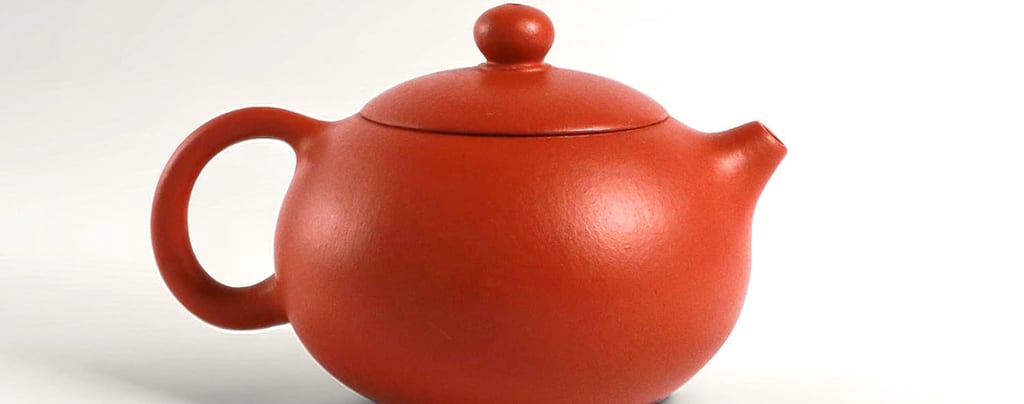

Characteristics: Hongni strikes the perfect balance between porosity and density, featuring medium porosity with excellent heat retention properties. Its deep red-brown color develops from iron oxide content, while its slightly rougher texture compared to zhuni provides more surface area for tea interaction.
Best Tea Pairings: Dark oolongs, robust black teas, and aged pu-erh teas find their ideal companion in hongni clay. The moderate porosity allows controlled flavor exchange while the heat retention ensures consistent brewing temperatures.
Why It Works: Hongni's balanced porosity mellows strong flavors and tannins while adding complexity and depth. It's particularly effective at smoothing harsh edges in powerful teas.
Specific Examples:
Yan Cha rock teas (100°C, 15-25 second steeps)
Keemun black tea (95°C, 3-4 minute steeps)
10+ year aged pu-erh (100°C, 10-20 second steeps)
Zini (Purple Clay紫泥): The Neutral Enhancer
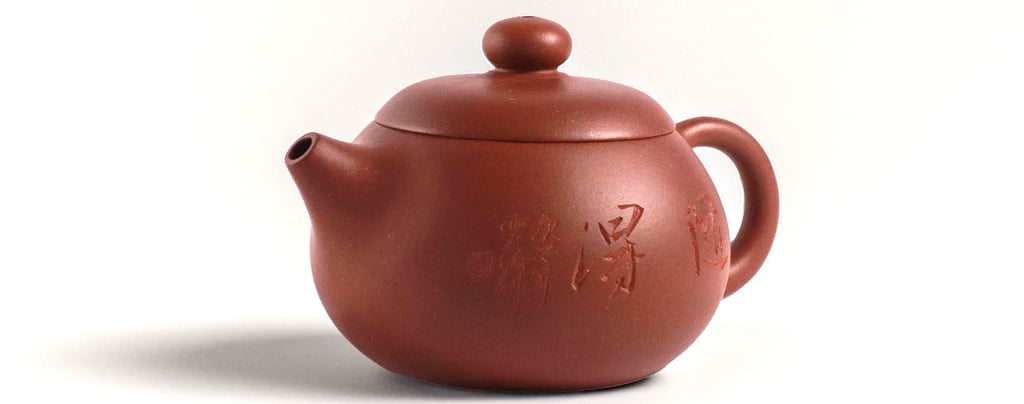

Characteristics: As the most common and versatile Yixing clay type, zini offers balanced porosity and neutral enhancement properties. Its purple-brown color varies depending on the specific clay source, while its moderate firing temperature creates an ideal middle ground for most tea types.
Best Tea Pairings: Raw pu-erh, green oolongs, and white teas benefit from zini's neutral enhancement. The clay preserves the tea's original character while providing subtle improvement in mouthfeel and aroma.
Why It Works: Zini's balanced nature means it enhances without overwhelming, making it perfect for teas where you want to experience their authentic character with gentle improvement.
Specific Examples:
Young sheng pu-erh (95°C, 15-30 second steeps)
Dong Ding oolong (95°C, 45-60 second steeps)
Silver Needle white tea (85°C, 2-3 minute steeps)
Duanni (段泥): The Bitterness Reducer
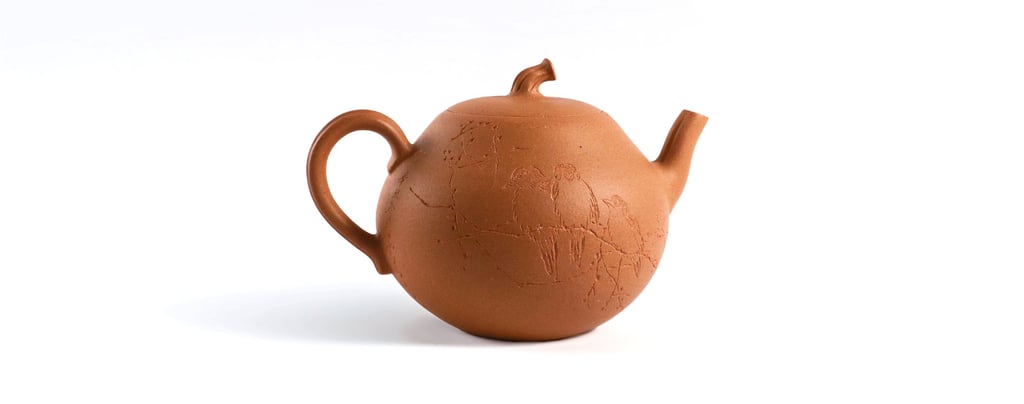

Characteristics: Duanni features the highest porosity among Yixing clays, with its light yellow-brown color and excellent breathability. The high porosity allows maximum interaction between clay and tea, making it ideal for teas that benefit from bitterness reduction.
Best Tea Pairings: Green teas, light oolongs, and jasmine-scented teas work beautifully with duanni clay. The high porosity absorbs bitter compounds while enhancing floral and sweet notes.
Why It Works: The clay's ability to absorb tannins and bitter compounds while allowing delicate flavors to shine makes it perfect for teas that can be overwhelmed by their own intensity.
Specific Examples:
Longjing green tea (80°C, 2-3 minute steeps)
Jasmine Phoenix Pearls (85°C, 90 second steeps)
Light roast Tieguanyin (90°C, 45 second steeps)
Teapot Size Selection Guide: Finding Your Perfect Capacity
Choosing the right teapot size is as crucial as selecting the proper clay type. The volume affects concentration, brewing efficiency, and the overall tea experience. Understanding when to use different sizes will dramatically improve your brewing results.
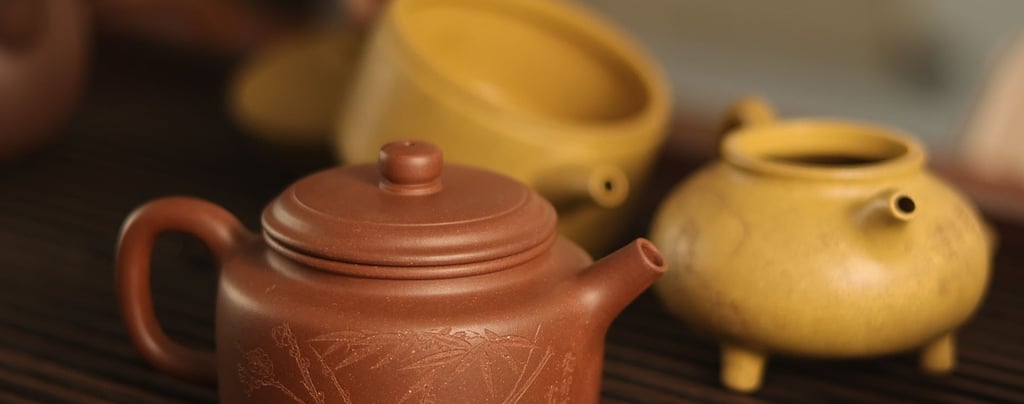

Small Teapots (80-150ml): The Connoisseur's Choice
Best For: Solo tea brewing sessions, high-grade teas, and traditional gongfu brewing methods. Small teapots excel when you want maximum control over each infusion.
Tea Types: Premium oolongs, aged pu-erh, rare and expensive teas where you want to extract maximum value from each gram of leaves.
Advantages:
Better concentration: Higher tea-to-water ratio creates more intense flavors
Temperature control: Easier to maintain optimal brewing temperature
Freshness: Each cup is consumed while hot, preserving delicate aromatics
Economy: Makes expensive teas last longer through multiple short infusions
Recommended Scenarios: Personal meditation sessions, tea tastings, evening relaxation, or when exploring new and expensive teas.
Medium Teapots (150-250ml): The Versatile Performer
Best For: Small groups of 2-3 people, daily brewing routines, and versatile tea service. Medium teapots offer the best balance between concentration and practicality.
Tea Types: Most oolong and pu-erh teas, Chinese black teas, and any tea you drink regularly benefit from medium-sized vessels.
Advantages:
Balanced brewing: Optimal tea-to-water ratios for most tea types
Social brewing: Perfect for sharing without constant refilling
Versatility: Works well for both strong and delicate teas
Efficiency: Good balance between flavor extraction and convenience
Recommended Scenarios: Afternoon tea with friends, daily morning routine, office brewing, or casual tea time.
Large Teapots (250ml+): The Group Server
Best For: Groups of 4+ people, mild teas that benefit from longer steeping, and teas that require more water to reach optimal flavor.
Tea Types: Green teas, white teas, herbal blends, and any tea that becomes bitter with high concentration work well in larger vessels.
Advantages:
Group service: Serves multiple people efficiently
Gentle extraction: Lower tea-to-water ratio prevents over-extraction
Convenience: Less frequent refilling for longer sessions
Delicate tea friendly: Perfect for teas that need space to unfold
Recommended Scenarios: Family gatherings, entertaining guests, office environments, or when brewing delicate teas that require gentle treatment.
Specific Tea-Teapot Pairing Recommendations: Your Complete Matching Guide
Now that you understand clay types and sizing, let's dive into specific pairing recommendations. These combinations have been refined through centuries of tea culture and represent optimal matches for flavor enhancement.
For Pu-erh Tea Lovers
Raw/Sheng Pu-erh + Zini Teapot (150-200ml)
Why this works: Zini's neutral enhancement preserves the complex evolution of young pu-erh while providing gentle mellowing of harsh edges
Brewing parameters: 95°C water, 15-30 second steeps, 1:15 tea-to-water ratio
Pro tip: Use shorter steeps for the first 3-4 infusions, then gradually increase as the tea opens up
Ripe/Shou Pu-erh + Hongni Teapot (200-250ml)
Why this works: Hongni's heat retention and moderate porosity enhance the rich, earthy flavors while smoothing any remaining rough edges from fermentation
Brewing parameters: 100°C water, 10-20 second steeps, 1:12 tea-to-water ratio
Pro tip: Rinse the tea twice before drinking to remove any fermentation dust and allow the true flavors to emerge
For Oolong Enthusiasts
Light Oolongs (Tie Guan Yin) + Duanni or Zhuni (120-180ml)
Duanni option: Reduces any bitterness while enhancing floral notes
Zhuni option: Preserves delicate flavors and enhances natural sweetness
Brewing parameters: 90-95°C water, 45-60 second steeps, 1:20 tea-to-water ratio
Dark Oolongs (Da Hong Pao) + Hongni or Zini (150-200ml)
Hongni option: Mellows strong mineral flavors while adding depth
Zini option: Preserves the tea's bold character while improving mouthfeel
Brewing parameters: 100°C water, 20-30 second steeps, 1:15 tea-to-water ratio
Aged Oolongs + Zhuni (100-150ml)
Why this works: Aged oolongs develop incredible complexity that zhuni preserves and enhances without interference
Brewing parameters: 95°C water, 30-45 second steeps, 1:18 tea-to-water ratio
Pro tip: These teas can handle many infusions—don't stop at 6 or 7 steeps
For Black Tea Drinkers
Chinese Black Teas + Hongni (200-300ml)
Best varieties: Keemun, Lapsang Souchong (unsmoked), Yunnan Gold
Why hongni: Enhances the malty sweetness while providing excellent heat retention for proper extraction
Brewing parameters: 95°C water, 3-4 minute steeps, 1:25 tea-to-water ratio
Smoky Teas + Zini (250ml+)
Best varieties: Traditional Lapsang Souchong, Russian Caravan blends
Why zini: Neutral enhancement allows the smoke flavor to shine while improving overall balance
Brewing parameters: 100°C water, 3-5 minute steeps, 1:30 tea-to-water ratio
For Green and White Tea Lovers
Green Teas + Duanni (200-300ml)
Best varieties: Longjing, Bi Luo Chun, Mao Feng
Why duanni: High porosity reduces bitterness while enhancing sweet and floral notes
Brewing parameters: 75-80°C water, 2-3 minute steeps, 1:30 tea-to-water ratio
Important: Never use boiling water with green teas in any clay teapot
White Teas + Zhuni or Duanni (150-250ml)
Zhuni for aged whites: Preserves complex flavors developed through aging
Duanni for young whites: Enhances delicate sweetness and floral notes
Brewing parameters: 85-90°C water, 3-5 minute steeps, 1:25 tea-to-water ratio
Expert Insight: "The beauty of Yixing teapot pairing lies not just in following rules, but in understanding how clay and tea communicate. Each pairing tells a story—the clay's minerals speaking to the tea's compounds in a dialogue that creates something greater than either could achieve alone." - Master Chen Wei, 4th generation Yixing artisan
Quick Reference Pairing Chart
Proper Yixing teapot care ensures optimal performance and longevity. The porous clay requires specific maintenance practices that differ significantly from other teaware.
Seasoning Your New Teapot: The Essential First Steps
Initial Preparation:
Rinse thoroughly with hot water to remove any clay dust
Boil the teapot in plain water for 30 minutes to open the clay pores
Cool gradually to prevent thermal shock
First tea session: Brew your chosen tea type 3-4 times, discarding the liquid
Rinse and dry completely before storage
Building Tea Patina: The clay will gradually absorb tea oils and develop a patina that enhances flavor. This process takes 20-30 brewing sessions for noticeable improvement and 100+ sessions for full development.
Timeline Expectations:
Week 1-2: Clay begins absorbing tea character
Month 1-3: Noticeable flavor enhancement develops
Month 6+: Full patina development creates optimal brewing conditions
Daily Care: Maintaining Peak Performance
Proper Cleaning Techniques:
Never use soap or detergents - they will clog the clay pores and ruin the seasoning
Hot water rinse only after each use
Gentle scrubbing with a soft brush for stubborn residue
Complete drying before storage to prevent mold
Drying and Storage:
Air dry completely with lid removed
Store in well-ventilated area
Avoid plastic bags or airtight containers
Keep away from strong odors that clay might absorb
Maintaining Clay Porosity:
Regular use keeps pores active
Occasional hot water rinses maintain cleanliness
Avoid temperature extremes that could crack the clay
Long-term Maintenance: Preserving Quality Over Years
Dealing with Buildup: If tea stains become excessive, use hot water and gentle scrubbing. For stubborn buildup, brief soaking in hot water (never soap) followed by gentle brushing usually suffices.
Deep Cleaning Process (only when absolutely necessary):
Boil teapot in plain water for 15-20 minutes
Cool gradually
Scrub gently with soft brush
Re-season with 2-3 tea sessions
Storage for Unused Teapots: Clean thoroughly, dry completely, and store in breathable containers. Check periodically for any moisture or odor development.
Common Mistakes to Avoid: Learning from Others' Experiences
Understanding these common pitfalls will save you time, money, and frustration while protecting your teapot investment.
Using Soap or Detergents: This is the most destructive mistake. Soap clogs the clay pores permanently, destroying the teapot's ability to enhance tea flavors. Once soap is used, the teapot may never recover its original properties.
Mixing Tea Types: Using different tea categories in the same teapot creates conflicting flavors. The clay absorbs and retains tea characteristics, so mixing green tea and pu-erh, for example, results in muddy, unpleasant flavors.
Storing While Damp: Moisture trapped in clay creates ideal conditions for mold and bacteria growth. Always ensure complete drying before storage to maintain hygiene and clay integrity.
Buying Fake or Low-Quality Clay: Imitation "Yixing" teapots lack the mineral composition necessary for tea enhancement. They may even contain harmful materials or glazes that interfere with brewing.
Ignoring Size Considerations: Using the wrong size for your brewing style leads to poor extraction, wasted tea, or unsatisfying results. Match teapot size to your typical serving needs and tea types.
Rushing the Seasoning Process: Attempting to accelerate patina development through excessive tea exposure or artificial methods can damage the clay. Allow natural seasoning to occur gradually through regular use.
If you're experiencing issues with your tea quality, you might want to explore why your tea tastes bad and how to fix it to ensure your brewing technique complements your teapot choice.
Expert Tips for Advanced Users: Elevating Your Practice
Once you've mastered basic pairing principles, these advanced techniques will refine your brewing to professional levels.
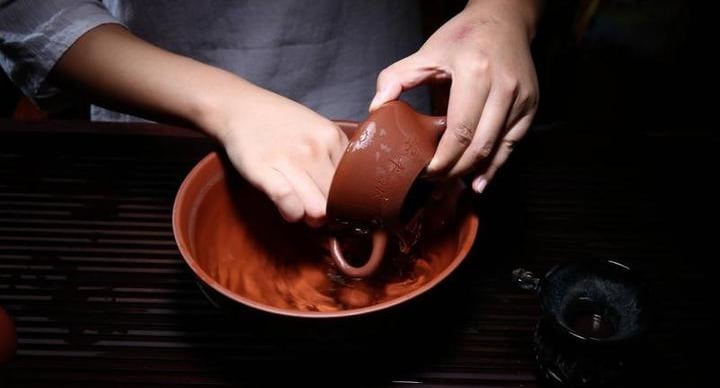

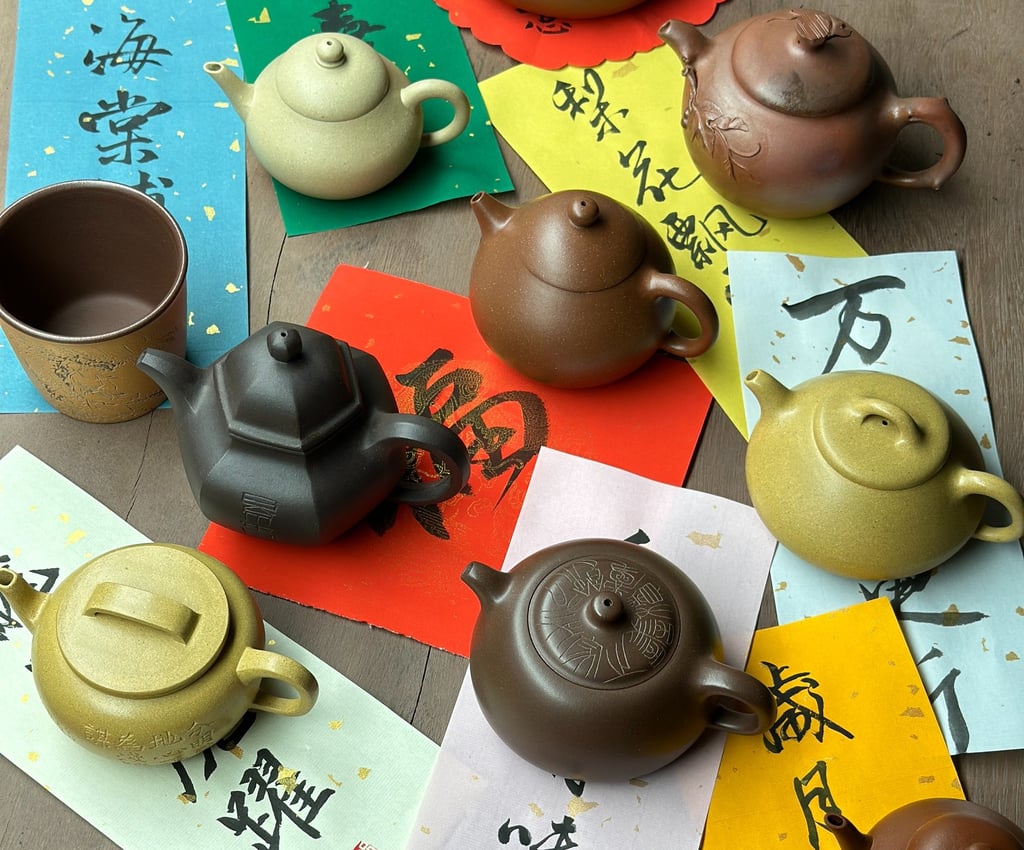

Phase 1: Foundation Building (First Teapot)
Recommended Start: Medium zini teapot (180-220ml) from reputable source ($100-250 range) Rationale: Zini's versatility allows exploration of multiple tea types while developing basic Yixing skills Tea Focus: Use exclusively with one tea type you drink regularly (oolong or pu-erh work well)
Phase 2: Specialization (Teapots 2-3)
Addition Strategy: Add clay types specific to your favorite tea categories Duanni Addition: If you enjoy green teas or light oolongs Hongni Addition: If you prefer dark teas, black teas, or aged pu-erh Size Considerations: Consider smaller sizes (120-150ml) for premium teas
Phase 3: Refinement (Teapots 4+)
Advanced Additions: Zhuni for special occasions and premium teas Size Variety: Different sizes within preferred clay types Artisan Pieces: Higher-quality pieces from recognized makers Specialized Shapes: Explore how different shapes affect brewing
Investment Considerations
Appreciation Potential: Authentic Yixing teapots from skilled artisans often appreciate in value, especially pieces from recognized makers or rare clay sources.
Usage vs. Collection: Balance functional pieces for daily use with investment pieces for special occasions. The best collections combine both approaches.
Authentication Importance: As values increase, identifying authentic Yixing teapots becomes crucial for both performance and investment protection.
Frequently Asked Questions: Expert Answers to Common Concerns
Can I use one Yixing teapot for multiple tea types?
While possible, it's not recommended for optimal results. Yixing clay absorbs tea oils and flavors, so mixing different tea types creates muddy, conflicting flavors. For best results, dedicate each teapot to one tea category (all oolongs, all pu-erh, etc.).
How long does it take to properly season a Yixing teapot?
Initial seasoning occurs within the first 10-15 uses, but full flavor development takes 50-100 brewing sessions. You'll notice gradual improvement in tea quality throughout this period. The clay continues evolving for years with regular use.
What's the difference between expensive and affordable Yixing teapots?
Price differences reflect clay quality, artisan skill, rarity, and authenticity. Expensive teapots often use superior clay sources, feature better craftsmanship, and may appreciate in value. However, affordable authentic pieces (50-150) still provide genuine Yixing benefits for daily use.
Can I repair a cracked Yixing teapot?
Minor cracks can sometimes be repaired using traditional techniques involving tea paste or specialized clay compounds. However, major damage usually cannot be effectively repaired without compromising function. Prevention through careful handling and gradual temperature changes is essential.
How do I know if my Yixing teapot is authentic?
Authentic indicators include: appropriate weight and texture, clear sound when tapped, proper clay color and finish, maker's marks or signatures, and sourcing from reputable dealers. When in doubt, consult experts or purchase from established tea retailers with authenticity guarantees.
Should I collect multiple sizes of the same clay type or different clay types first?
For most tea enthusiasts, collecting different clay types first provides more versatility and learning opportunities. Once you identify preferred clay types, adding different sizes of those clays maximizes utility. However, if you primarily drink one tea type, multiple sizes of the optimal clay type may be more practical.
Conclusion: Your Journey to Perfect Tea-Teapot Harmony
Mastering Yixing teapot pairing transforms tea brewing from a simple daily ritual into an art form that honors centuries of refined tradition while satisfying modern preferences. The principles outlined in this guide—understanding clay characteristics, matching tea types appropriately, selecting proper sizes, and maintaining teapots correctly—provide the foundation for extraordinary tea experiences.
Remember that perfect pairing develops through experimentation and patience. Start with one versatile teapot that matches your primary tea preferences, then gradually expand your collection based on experience and developing tastes. The clay will teach you as much as any guide, rewarding careful attention with increasingly sublime brewing results.
The journey from novice to expert involves not just accumulating knowledge, but developing sensitivity to the subtle interactions between clay, tea, water, and technique. Each brewing session offers opportunities to refine your understanding and deepen your appreciation for this ancient art.
Ready to begin your Yixing journey? Start by identifying your most-consumed tea type, then select an appropriate clay type and size using this guide's recommendations. Focus on proper care and dedicated use to develop the tea-clay relationship that makes Yixing teapots legendary.
Browse our curated collection of authentic Yixing teapots, each selected for quality and paired with detailed brewing guides to ensure your success from the very first steep.
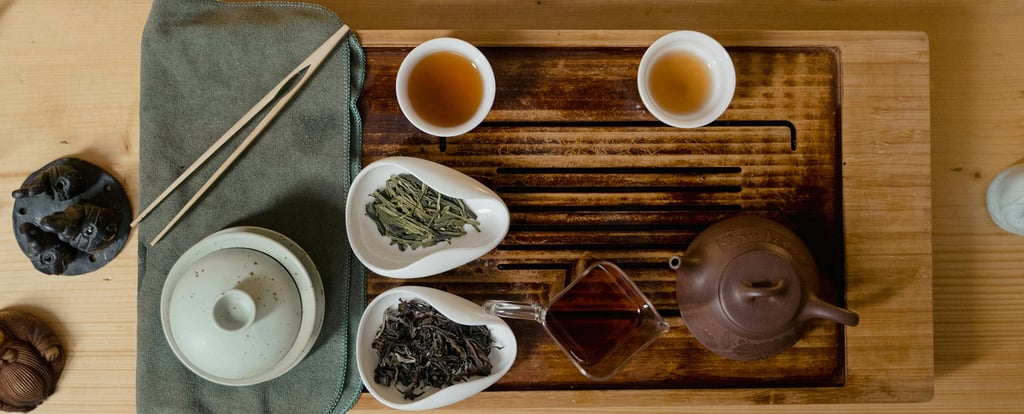

Developing Your Clay Sensitivity Palate
Comparative Tasting: Brew the same tea in different clay types side-by-side to understand each clay's influence. Start with a neutral tea like mid-grade oolong to clearly perceive differences.
Seasonal Rotation: Use different clay types throughout the year—lighter clays for spring and summer teas, richer clays for autumn and winter brewing. This practice aligns with seasonal tea preferences and natural taste evolution.
Documentation Practice: Keep brewing notes recording clay type, tea variety, parameters, and results. Over time, patterns emerge that guide future pairing decisions.
Strategic Collection Building
Start with Versatility: Begin with a zini teapot in medium size (180-220ml) for daily use, then add specialized pieces based on your tea preferences.
Clay Progression: Add clays in order of your tea consumption—if you drink mostly oolongs, prioritize zhuni or hongni before acquiring duanni for occasional green teas.
Size Strategy: Collect different sizes of your preferred clay type before diversifying clay varieties. This approach maximizes utility while developing deep familiarity with specific clay characteristics.
Advanced Brewing Techniques
Temperature Modulation: Use clay type to adjust effective brewing temperature—zhuni retains heat longer, allowing slightly lower starting temperatures, while duanni's porosity requires precise temperature control.
Multi-Stage Brewing: For complex teas, use different steeping times in early vs. later infusions to work with the clay's absorption characteristics.
Clay Preparation Rituals: Warm teapots with hot water before adding tea, especially important for denser clays like zhuni that take longer to reach optimal temperature.
Seasonal Pairing Considerations: Adapting to Natural Rhythms
Traditional Chinese tea culture recognizes seasonal influences on taste preferences and tea selection. Adapting your Yixing teapot choices to seasonal patterns enhances both brewing results and cultural appreciation.
Spring Pairing Strategy (March-May)
Optimal Choices: Duanni and light zini teapots work beautifully with spring's fresh, delicate teas. The season's new growth teas benefit from clay that enhances rather than overwhelms their subtle characteristics.
Recommended Teas: Fresh green teas, light oolongs, and young white teas align with spring's renewal energy. These teas pair naturally with the season's lighter, more porous clays.
Cultural Context: Spring represents new beginnings in Chinese philosophy, making it ideal for experimenting with new tea-teapot combinations or learning to use a Yixing teapot for the first time.
Summer Pairing Strategy (June-August)
Optimal Choices: Continue with duanni for its cooling properties, or experiment with zhuni for iced tea preparations. Summer's heat makes delicate, refreshing teas more appealing.
Recommended Teas: Green teas, light oolongs, and cooling white teas provide relief from summer heat while working beautifully with lighter clay types.
Brewing Adaptations: Consider shorter steeping times and slightly lower temperatures to create more refreshing, less intense brews suitable for warm weather.
Autumn Pairing Strategy (September-November)
Optimal Choices: Transition to hongni and darker zini teapots as preferences shift toward richer, more warming teas. Autumn's cooling temperatures call for more substantial flavors.
Recommended Teas: Dark oolongs, aged teas, and early pu-erh selections provide the warming, complex flavors that complement autumn's contemplative mood.
Cultural Significance: Autumn represents harvest and reflection, making it perfect for exploring aged teas and developing deeper appreciation for complex tea-clay interactions.
Winter Pairing Strategy (December-February)
Optimal Choices: Hongni and well-seasoned zini teapots excel in winter, providing the heat retention and flavor depth needed for cold weather brewing.
Recommended Teas: Aged pu-erh, robust black teas, and deeply roasted oolongs offer the warming, substantial character ideal for winter sessions.
Brewing Considerations: Longer steeping times and higher temperatures work well in winter, taking advantage of hongni's excellent heat retention properties.
Troubleshooting Common Pairing Problems
Even experienced tea enthusiasts encounter pairing challenges. Understanding common issues and their solutions prevents frustration and protects your teapot investment.
Problem: Tea Tastes Flat or Lifeless
Possible Causes:
Clay type doesn't complement tea characteristics
Teapot not properly seasoned
Incorrect brewing parameters for clay-tea combination
Solutions:
Try different clay type more suited to your tea
Allow more seasoning time (20-30 sessions minimum)
Adjust temperature, timing, or tea quantity
Ensure teapot is properly warmed before brewing
Problem: Overwhelming or Muddy Flavors
Possible Causes:
Clay too porous for delicate tea
Mixed tea types contaminating flavors
Over-extraction due to incorrect parameters
Solutions:
Switch to less porous clay (zhuni instead of duanni)
Dedicate teapot to single tea type
Reduce steeping time or tea quantity
Lower brewing temperature
Problem: Bitter or Astringent Results
Possible Causes:
Clay not reducing tannins effectively
Brewing temperature too high
Steeping time too long for clay-tea combination
Solutions:
Try duanni clay for tannin reduction
Lower brewing temperature by 5-10°C
Reduce steeping time significantly
Increase tea-to-water ratio while shortening steeps
Problem: Inconsistent Results
Possible Causes:
Inadequate teapot seasoning
Inconsistent brewing parameters
Clay quality issues
Solutions:
Continue regular seasoning process
Standardize measurements and timing
Verify teapot authenticity and quality
Cultural Context and Traditional Practices: Honoring Tea Heritage
Understanding the cultural foundation of Yixing teapot pairing enriches the practical experience and connects modern tea lovers with centuries of refined tradition.
Historical Development
Yixing teapots emerged during the Song Dynasty (960-1279) but reached artistic and functional maturity during the Ming Dynasty (1368-1644). The pairing principles we follow today developed through generations of tea masters who discovered optimal combinations through careful observation and documentation.
Traditional Pairing Wisdom: Ancient tea masters recognized that "the teapot is the tea's best friend or worst enemy." This philosophy drove the development of specific clay preparations and pairing guidelines that modern science has validated through understanding of mineral interactions and porosity effects.
Regional Preferences: Different Chinese regions developed distinct pairing traditions based on local tea types and clay availability. Fujian oolong masters preferred different combinations than Yunnan pu-erh specialists, creating diverse approaches that enrich modern practice.
Modern Adaptations for Western Brewing
While honoring traditional principles, contemporary tea enthusiasts can adapt Yixing pairing practices to Western preferences and lifestyles.
Quantity Adjustments: Western preferences for larger serving sizes work well with traditional pairing principles—simply scale up teapot sizes while maintaining clay-tea relationships.
Time Adaptations: Busy Western lifestyles may require longer steeping times rather than traditional multiple short infusions. Most clay-tea pairings adapt well to this modification.
Temperature Flexibility: Modern temperature control tools allow precise implementation of traditional brewing parameters, often improving results beyond what historical tea masters could achieve.
Building Your Yixing Collection: A Strategic Approach
Developing a thoughtful Yixing collection maximizes both enjoyment and investment value while avoiding common purchasing mistakes.
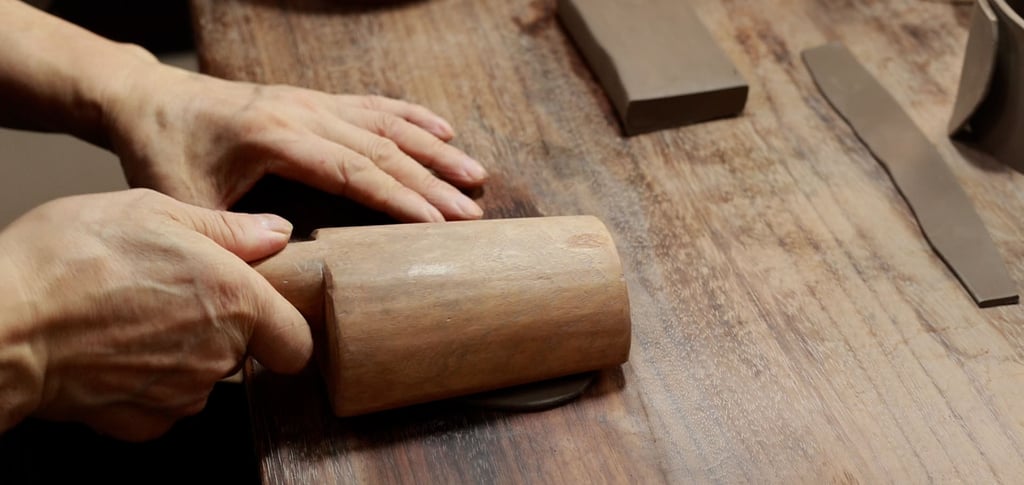

Subscribe to Our Newsletter - Discover TEAPOTARTISAN
Enter your email address to subscribe to the latest updates on TEAPOTARTISAN products, events, and services. You can unsubscribe at any time by sending an email to our designated email address. Your email address will only be used to send you relevant information about TEAPOTARTISAN, and we will not share or transfer your email address to any third parties.
